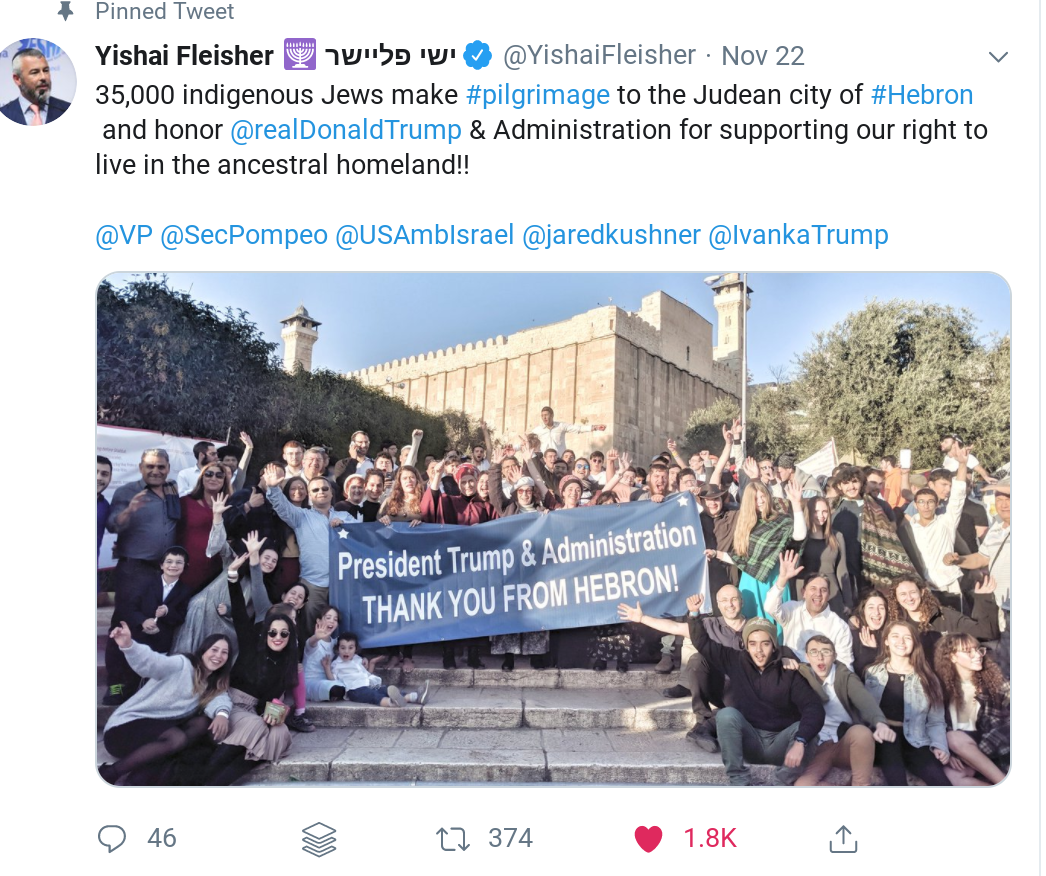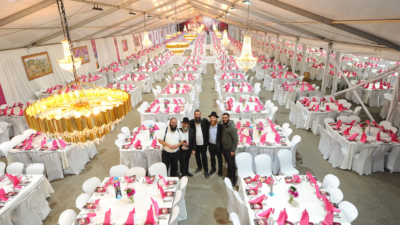Jews from around the world made a pilgrimage to the city of Hebron in Judea and Samaria over the weekend to pay homage to the Jewish biblical matriarch Sarah, whose death led to the purchase by her husband Abraham of a burial plot in Hebron, a transaction recounted in last week’s Torah portion of Chayei Sarah.
An estimated 40,000-50,000 Jews converged on Hebron and its adjacent sister city of Kiryat Arba over the weekend, with festivities centering around the Tomb of the Patriarchs and Matriarchs, the edifice built 2,000 years ago by King Herod atop the burial cave, which according to the Bible is the final resting place not only of Sarah, but also of Abraham, Isaac and Jacob, as well as Rebecca and Leah.
Just before the beginning of Shabbat, Hebron Jewish Community spokesman Yishai Fleisher tweeted a picture of Jews holding a large banner which thanked U.S. President Donald Trump for his support for Jewish life in communities in Judea and Samaria, such as Hebron.
Multiple high-ranking Israeli officials and dignitaries arrived to take part in the event, including Jerusalem Affairs Minister Ze’ev Elkin; Transportation Minister Bezalel Smotrich; Social Equality Minister Gila Gamliel; Yamina Knesset member Moti Yogev; Shas Knesset member Michael Malkieli; Knesset member and former National Security Council head Uzi Dayan; Chief Rabbi of Tzfat Shmuel Eliyahu; Chief Rabbi of Beersheba Yehuda Deri; Israeli radio personality Yoram Sheftel; and musician Etti Ankari.

The 1,000 Israelis living in Hebron are currently allowed access to just 3 percent of the 250,000-person city. Their portion contains the Tomb of the Patriarchs and Matriarchs, but is highly regulated by the Israeli government.
Despite the extensive Jewish history at the location, UNESCO declared the tomb a Palestinian World Heritage Site in 2017.
Due to the small number of Jewish homes and institutions available to house guests, hundreds of visitors arrived with tents or trailers, setting up makeshift camps in pre-designated areas and cramming into any available unused space, slowing traffic through the area before and after Shabbat to a crawl.

However, the majority of pilgrims were welcomed in nearby Kiryat Arba, which is home to 9,000 people. From here, the visitors were able to walk to Hebron, with the help of an increased number of IDF forces on hand to oversee the safety of the event.
“I think of it as Woodstock meets the Bible,” Fleisher told JNS. “On the one hand, it’s an incredible festival that includes spirituality, lectures, Friday- and Saturday-night music, but at the same time, the main event is the reading of the Torah portion, which describes the purchase of this plot of land by Abraham.”
“There is nothing like reading that ancient scroll in that ancient spot together with the children of that place, the Jewish people,” he said.


























